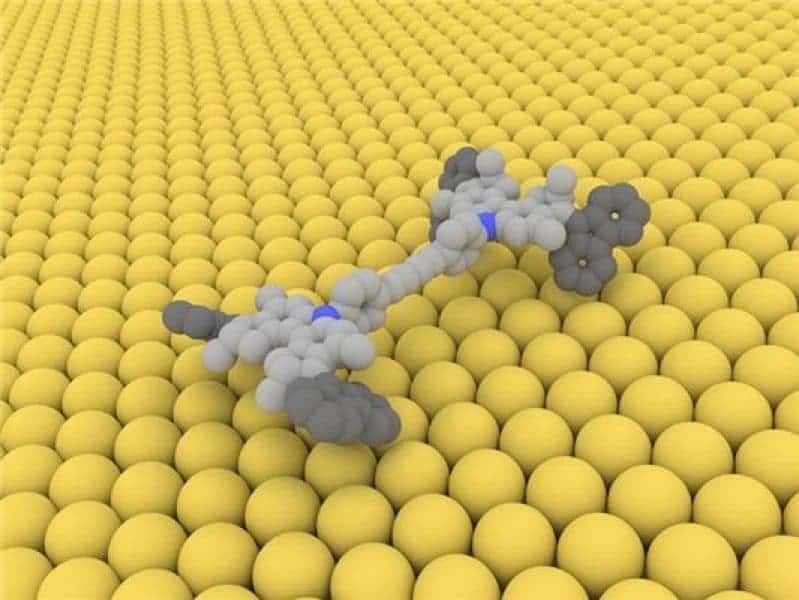After the Chemistry Nobel Prize was awarded to researchers working on molecular machines, scientists have taken it a step forward – creating an actual four-wheel-drive molecular car.

Credit: Courtesy of Ben Feringa
Bernard L. Feringa, one of the researchers who received the Nobel Prize, teamed up with Groningen colleague Syuzanna R. Harutyunyan and Karl-Heinz Ernst of the Swiss Federal Laboratories for Materials Science & Technology to develop the beauty you see above.
Previously, nanocars either simply diffused along a surface or had to be towed by the tip of a scanning tunneling microscope (STM). This time, the car can actually move forward, powered by electrons fired from an STM. The mechanism is quite creative: the electrons prompt isomerization of the double bonds in its molecular motor “wheels,” thus propelling it forward. With 10 electrons, the car can move 6 nanometers forward.
While the car image is simply aesthetic, it does highlight a level of sophistication. But even so, Feringa says that at this moment, there is little practical application for the technology.
“At the moment I would not consider the system to have any practical application,” Feringa tells C&EN. “However, thinking about future applications, this is a small but significant step forward. Ultimately, nanomachines and devices like sensing and delivery systems need to be powered. For that, molecular motor s will be required. Probably future designs will be different from what we show here, but we have to demonstrate the fundamental principles.”
But others are more confident. James M. Tour, the Rice University chemistry professor who made the first nanocar, believes they could be used for controlled biological transport in a similar way to how enzymes work. The problem is that for now, the car only works at a chilly temperature of 7 K – just seven degrees Kelvin above the absolute zero (about -447F or -266C). If we want it to work in a real biological context, then the temperature has to be much higher, as Feringa himself says:
“The key next step will be to demonstrate this type of movement in ambient conditions: room temperature and ambient pressure,” he says. “This is a real challenge as we have to balance the interactions with the surface to a much larger extent.”
Getting control over the delicate balance between surface interaction and movement is a major goal, Feringa says.
“We also have to make defined trajectories, see if we can transport cargo, and make a setup where we can demonstrate similar movement using light as the energy source,” he adds.


